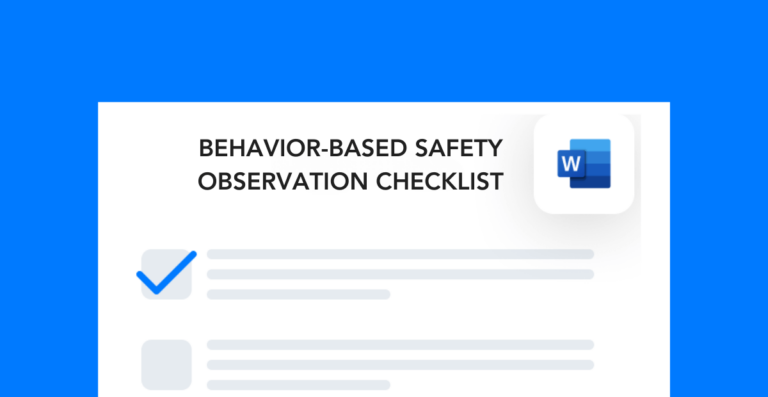Can you recall a time when someone asked you specifically not to do something and you couldn’t help but do it anyway? Workplace safety is all about making conscious decisions to keep you and your surroundings safe, but some behaviors can stand in the way of that. That’s where behavior-based safety comes into play. BBS is believed to have been founded around the 1930s by safety pioneer Herbert William Heinrich.
What is behavior-based safety?
Behavior-based safety (BBS) is an approach to improving performance and reducing the frequency of accidents and injuries. This is achieved by identifying the causes of unsafe behaviors and eliminating these unsafe behaviors through training, coaching, positive feedback, and recognition. Simply put, BBS attempts to “change the way people work”, much like other approaches such as layered process audits, 5s audits, or Kaizen events. But BBS also adds a component that some of these other approaches don’t have. It addresses what we can refer to as the “softer” side of existing practices — specifically employee conduct, attitude, and collaboration.
How do we define unsafe behavior?
88% of workplace safety incidents are the result of unsafe behaviors, which is why BBS is considered significant. So, what is this so-called “unsafe behavior?” Unsafe behavior is conducting an action that may increase the probability of an injury or incident. Some of the most common unsafe behaviors in the workplace are;
- Improper use of PPE
- Failure to use PPE
- Use of defective equipment
- Removal, or failure to use, of safety devices
- Operation of equipment at unsafe speeds
- Operation of equipment without proper authorization, training, and/or qualifications
These acts are all considered to be a “human error,” but human error cannot always be the root cause of why an incident occurred, it is more likely to be a causal factor. Human error is categorized into two parts, errors, and violations. Errors are made up of unintentional and habitual actions whereas violations are conscious behaviors.
Everyone makes unintentional errors, and when you come across someone making an unconscious mistake that creates risk, make sure to draw attention to what they are doing. Habitual mistakes might have multiple reasons for occurring. An employee might not have clearly understood a certain process or they might not be aware of a rule or regulation that recently changed. It’s important to understand the reason behind this habit and address it accordingly.
How to implement behavior-based safety?
The key factor that comes with safety leaders implementing BBS is acknowledging the fact that it is an inclusive and collaborative method. Employees and workers must be aware that reducing risks and injuries with BBS is only accomplishable with their support and enforcement. This creates the task of promoting the BBS program as what it is, a way to make the workplace safe.
Listen
BBS thrives in a top-down approach. Seeing the participation and the engagement of upper management will likely have a positive impact on the participation of workers. A great example of BBS is when an employee sees an unsafe action and brings it to the attention of their safety leader. It is vital that workers are listened to and comforted in knowing that they can speak up about any risks they encounter.
Observe
Observation is critical when categorizing unsafe behaviors and safety issues. Depending on the work environment, actions like PPE use, procedures, chemical use, fall protection, ergonomics, etc. must all be observed. Use a BBS observation checklist or action tracking software to get full visibility across the work field.
Give feedback
Pointing out mistakes and wrongdoings is not going to help create an environment where workers feel comfortable enough to share their observations and take part in BBS. Providing positive reinforcement is also difficult to sustain and might now always bring results when implemented towards adults. This is why it’s important to make frequent observations and give feedback on what the observation entails.




